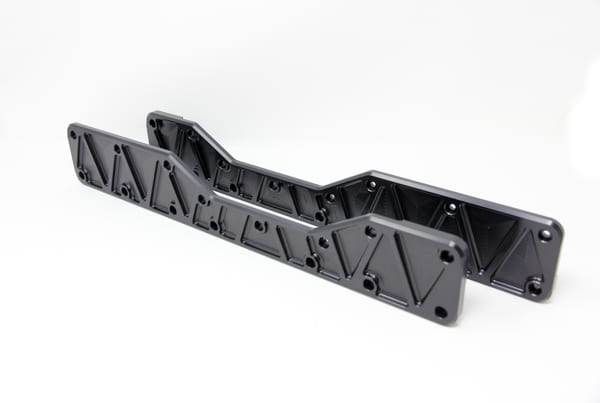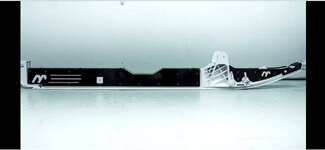Install the app
How to install the app on iOS
Follow along with the video below to see how to install our site as a web app on your home screen.
Note: This feature may not be available in some browsers.
Rail braces
- Thread starter joshkoltes
- Start date
You are using an out of date browser. It may not display this or other websites correctly.
You should upgrade or use an alternative browser.
You should upgrade or use an alternative browser.
I don't know if they read this or what but they emailed me and went a different route in shipping, itll take alot longer but that's good business
I'd still like to see a list of other options though

 www.backwoodsbmp.com
www.backwoodsbmp.com

 www.countrycat.com
www.countrycat.com

 tkicnc.com
tkicnc.com

 www.pindperformance.com
www.pindperformance.com
I'd still like to see a list of other options though

Alpha FULL Rail Brace | home
The ALL NEW Full Alpha rail brace. The furthest reaching Alpha rail brace on the market is now offered! fully machined 6061-t6 aluminum with the same dependibility and reliabiliy that all BackwoodsBMP products have to offer. We currently are offering 150+ and 160+ that are ready to roll, while...
 www.backwoodsbmp.com
www.backwoodsbmp.com

Arctic Cat Heavy-Duty Rail Brace Kit - 2019-2020 M Alpha One 154 165
Arctic Cat Heavy-Duty Rail Brace Kit - 2019-2020 M Alpha One 154 165 - 8639-290

ARCTIC CAT ALPHA RAIL BRACE - TKI CNC
Rail braces for the Arctic Cat Alpha provide bracing on the monorail. Built and designed for agressive riders or jumpers. Constructed of 6061 aluminum and available in raw or black color.

Omega Rail Brace System - Alpha Rail
Current inventory is up to date and shown in selections. If you want a color/length we don't have, there is more on the way (Mid to late December) and you can place an order for it to ensure you get the combo you want. The Alpha finally got its Omega. The strongest Alpha rail braces out there...
B
Was checking out the one from Pin'd yesterday it looks tough and well designed. They are a bit proud of it though. Gotta see how much warranty I have left before I decide.
G
I have been looking at rail braces as well but, after being an aircraft structural repairman for decades, I am not really interested in drilling a ton of holes in my stock rail. Each one of those new holes you drill can weaken the rail and create stress risers from which a crack can start.(
I like the way P'ind incorporates the rear pivot arm holes and bolt as part of their brace.
Give me this design and make it one "U" shaped piece that slides over from the top of the rail (with a cut out for the area on the top of the rail for the bumper pad) and maybe one hole up front. Use the rear scissor arm hole for the mount in the rear and give me some space age glue/sealant and I'll be happy.
I also wonder, is the rail hollow? If so, maybe some type of strength enhancing structural foam could be injected internally to boost the strength from the inside? Aircraft use a honeycomb like structure inside wing panels for added strength while retaining their low weight. Perhaps Cat should look at incorporating a honeycomb like structure or some lightweight strength enhancing material inside the rail to boost strength during manufacture.

 www.pindperformance.com
www.pindperformance.com
I like the way P'ind incorporates the rear pivot arm holes and bolt as part of their brace.
Give me this design and make it one "U" shaped piece that slides over from the top of the rail (with a cut out for the area on the top of the rail for the bumper pad) and maybe one hole up front. Use the rear scissor arm hole for the mount in the rear and give me some space age glue/sealant and I'll be happy.
I also wonder, is the rail hollow? If so, maybe some type of strength enhancing structural foam could be injected internally to boost the strength from the inside? Aircraft use a honeycomb like structure inside wing panels for added strength while retaining their low weight. Perhaps Cat should look at incorporating a honeycomb like structure or some lightweight strength enhancing material inside the rail to boost strength during manufacture.

Omega Rail Brace System - Alpha Rail
Current inventory is up to date and shown in selections. If you want a color/length we don't have, there is more on the way (Mid to late December) and you can place an order for it to ensure you get the combo you want. The Alpha finally got its Omega. The strongest Alpha rail braces out there...
Last edited:
My thoughts on the braces is I don't like that they are drilled but only riveted, To me each hole is a weaker point it could crack from, And if the rail did start to move, with rivets installed, its going to bend a tad before the rivets grab or stop it from moving which then means it could form cracks in each rivet hole.
Now ideally rivets would mean clamping force, but I can't see them providing that kind of force to stop the rail from tweaking and actually transferring the load in through the brace, Drilling through holes and using bolts would seem better but then thats even worse because that again In my mind would certainly be worse in that it would further degrade overall rail strength?
Now ideally rivets would mean clamping force, but I can't see them providing that kind of force to stop the rail from tweaking and actually transferring the load in through the brace, Drilling through holes and using bolts would seem better but then thats even worse because that again In my mind would certainly be worse in that it would further degrade overall rail strength?
None of the options are really that fantastic. They all fail to bridge the OEM connections where a LOT of the failures occur. They help handle the easier to brace spots but both the glued/riveted rear wheel holder segmet as well as the cast nose piece attaching to the main extrusion are both rather common failure points. So while you may beef the rest up like crazy, its just going to concentrate loads on the remaining joints.
Theres 2 good solutions for true actual durability. Convert back to a twin rail skid, or KMOD skinny skid. Or just keep an extra rail or two around since they cost barely more then the brace kits do.
Theres 2 good solutions for true actual durability. Convert back to a twin rail skid, or KMOD skinny skid. Or just keep an extra rail or two around since they cost barely more then the brace kits do.
Finally some thoughts that echo mine. In addition I can’t count the number of twin rails I’ve broken over the years. Have five Alphas and have yet to need the spare rail. The breaks I’ve seen aren’t even covered by the brace kits. Seem to occur with improper shock pressures more than any other variable I’ve observed.
Can you elaborate a bit more on this? Guessing its a bottoming out issue?Seem to occur with improper shock pressures more than any other variable I’ve observed.
Correct. Most cracks I’ve seen open at top of beam not bottom indicating sled to beam impact, not obstacle to beam. Or the simple hardware came loose or failed issues.
What caught my eye was the little guys breaking beams while heavy guys like me weren’t. I’m pumping up to avoid bottoming while they’re deflating for a better ride. Not a bad thing unless you go too low.
I understand crap happens and I’m sure that there’s been obstacle impact damages.
I’ve spent 30 years building farm equipment and rebuilding what gets torn up. Rarely seen a bolted brace (drilling holes) or welded gusset address a common weak point. They typically just create a new shear point or transfer damage to next weakest link.
They’ll occasionally buy you time, but when that time is up you’ve got a bigger problem than before.
What caught my eye was the little guys breaking beams while heavy guys like me weren’t. I’m pumping up to avoid bottoming while they’re deflating for a better ride. Not a bad thing unless you go too low.
I understand crap happens and I’m sure that there’s been obstacle impact damages.
I’ve spent 30 years building farm equipment and rebuilding what gets torn up. Rarely seen a bolted brace (drilling holes) or welded gusset address a common weak point. They typically just create a new shear point or transfer damage to next weakest link.
They’ll occasionally buy you time, but when that time is up you’ve got a bigger problem than before.
I’m still not sold on the mindset that you need an overly stiff spring or huge pressures in the air shocks to prevent the damage. I understand where that thought comes from with the way the tip of the rail breaks downward, but I have noticed that most of those breaks happen behind the front shock so I’m wondering if overly stiff shocks could be contributing to the breaks. You hit something at the wheels, it’s going to push the rail up against that stiff shock which is going to be pushing the tip of the rail down. Not saying this is what’s happening, but It’s possible that a sudden impact against that stiff shock could lead to damage. There’s gotta be a reason cat says right in the manual not to run more than 60 psi in the front shock. I’m probably 300lbs geared up and run 45psi up front and so far so good(knock on wood) and I’ve definitely bottomed out a few times.
I never said to overinflate.
Only that those I’ve seen personally are running lower pressures.
I have a neck fusion so ride quality can make or break my day. Definitely not worth harshing my ride by over pressuring.
Only that those I’ve seen personally are running lower pressures.
I have a neck fusion so ride quality can make or break my day. Definitely not worth harshing my ride by over pressuring.
That seems to be the consensus, or popular opinion, on the social media platforms. Run high pressures or aftermarket stiff springs on the fts or guaranteed rail breakage. I’m not saying soft pressures are not the cause, I just haven’t seen enough actual evidence to say for certain and am simply stating another possibility. IMO someone stating something on social media does not equal evidence no matter how many people jump on the bandwagon. My idea must be controversial though, because I have even been blocked by people on Facebook for bringing up this same point and going against popular opinion. Either way I’m curious to the reason for cats 60psi max pressure warning on the front shock. They must have seen something to warrant putting that in the manual.
I have no social media accounts aside from snowest so that has no impact on my experience or opinion whatsoever.
I prefer reality.
I prefer reality.
isnt the shock’s dampening more of a factor than the spring(air or coil) in terms of bottoming out? What are you guys running in the way of clicker settings generally?
What do you weigh and what do you run for spring rate IDspud?
Maybe a Goldilocks thing, way to stiff causes fatigue in a different place than too soft and smashing on bottom out?
Im 180# without gear. Trying to learn so I can figure out a rough idea what to run when my hardcore gets here.
What do you weigh and what do you run for spring rate IDspud?
Maybe a Goldilocks thing, way to stiff causes fatigue in a different place than too soft and smashing on bottom out?
Im 180# without gear. Trying to learn so I can figure out a rough idea what to run when my hardcore gets here.
I’m 300 in the shower and have air shocks only. Change clickers across all settings.
4700 and change miles on one of my Alphas, original beam.
3700, 2700 on two others, same story.
We never ride trails, most of our areas don’t even have parking lots or trail systems. Meaning these aren’t babied.
4700 and change miles on one of my Alphas, original beam.
3700, 2700 on two others, same story.
We never ride trails, most of our areas don’t even have parking lots or trail systems. Meaning these aren’t babied.
I am sure it is the trails that kill them. Lots of failures here, but from very aggressive guys. Same guys that kill the tracks.
So trail whoops are doing serious damage?
We see plenty of stumps, rocks, my sleds are even quite familiar with sage brush on the way in and out but harsh as those all are they feel better on my fused neck than whooped trails.
We see plenty of stumps, rocks, my sleds are even quite familiar with sage brush on the way in and out but harsh as those all are they feel better on my fused neck than whooped trails.
Similar threads
- Replies
- 1
- Views
- 987
- Replies
- 4
- Views
- 2K
F
- Replies
- 12
- Views
- 2K
F
B
- Replies
- 8
- Views
- 2K
B
- Replies
- 7
- Views
- 1K




